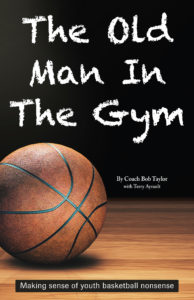Benefits of High School and Youth Sports for Student-Athletes
The benefits of high school and youth sports have always been expressed by coaches, parents, and administrators. Now, however, there are quantifiable data that suggests there are considerable non-physical benefits of playing sports in addition to the physical ones.According to AtYourOwnRisk.org, the general public’s external website for the National Athletic Trainers’ Association (NATA), playing sports in high school can lead to a larger likelihood of achieving better grades, reaching college, and having better life skills in their post-education worlds.
 High school student-athletes are far less likely to drop out of high school, according to a 2003 entitled “School Athletic Participation: Mostly Gain with Little Pain.” In fact, student-athletes have been shown to consistently post higher grades than those who do not participate in high school sports, according to a 1999 study called “Student Council, Volunteering, Basketball or Marching Band: What Kind of Extracurricular Involvement Matters?” Going off those numbers, student-athletes are 15 percent more likely to attend college while showing improved concentration and classroom behavior.
High school student-athletes are far less likely to drop out of high school, according to a 2003 entitled “School Athletic Participation: Mostly Gain with Little Pain.” In fact, student-athletes have been shown to consistently post higher grades than those who do not participate in high school sports, according to a 1999 study called “Student Council, Volunteering, Basketball or Marching Band: What Kind of Extracurricular Involvement Matters?” Going off those numbers, student-athletes are 15 percent more likely to attend college while showing improved concentration and classroom behavior.
According to a 2007 study by the name of “Racing to a Degree: High School Sports Helps Girls Earn College Diplomas”, young women — including women from disadvantaged backgrounds — who played high school sports were 73 percent more likely to earn a degree within six years after graduating high school.
Outside of academia, those who played competitive sports at the high school level have shown to have better command of important life skills. A 2014 study, “Sports at Work: Anticipated and Persistent Correlates of Participation in High School Athletics,” says that former student-athletes show more confidence, leadership, and self-respect while also holding strong time-management skills and a goal-setting mindset. According to a 2006 study, “The Passage to Adulthood: Challenges of Late Adolescence,” former student-athletes have a better sense of diversity and a more developed sense of morality.
Playing high school sports even impacts your wallets, some studies say. In a 2000 study called “The Effects of High School Athletic Participation on Education and Labor Market Outcomes,” people who played competitive sports tend to earn significantly higher incomes than those who did not. In fact, 82 percent of women executives in the workforce played organized sports while 60 percent of those women executives agreed that “sports participation gave them a competitive edge in the business world, according to a 2012 study called “Playing Youth Sports Helps Women in their Careers.”
And while the non-physical benefits may not be as obvious as the physical benefits, playing high school sports typically leads to a healthier lifestyle. Student-athletes have stronger peer relationships, better attachment with adults, higher self-esteem, a closer sense of family, and participate in more volunteerism, according to a 2009 study called “Patterns of Adolescents’ Participation in Organized Activities.” A 2000 survey of more than 14,000 teens from the United States found that those who played team sports were less likely to use drugs and smoke cigarettes.
» ALSO SEE: Five Tips for Recruiting High School Players
The Center for Disease Control and Prevention (CDC) recommends that children ages six to 17 participate in at least one hour of physical activity a day. Those who play high school sports and remain physically active are 1/10 less likely to experience obesity, have a lower incidence of heart disease, stroke or even cancer, and consequently, face lower healthcare costs in their lifetimes, according to a 2003 study.
To see more from AtYourOwnRisk.org, click here.












